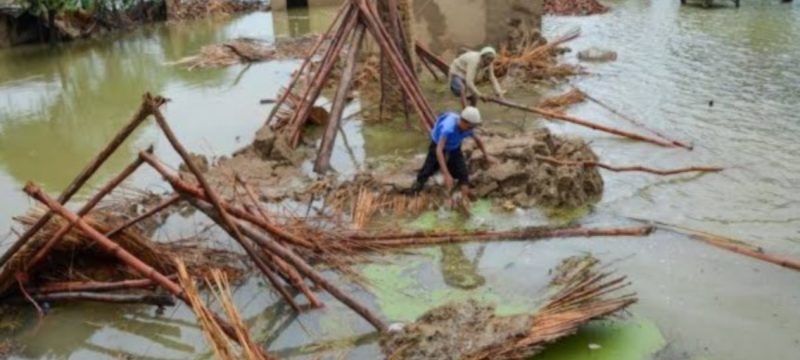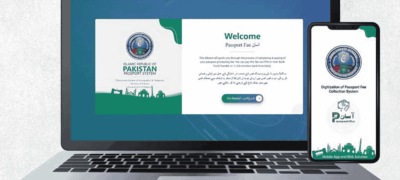The ongoing monsoon season has turned into a devastating disaster in several regions, as the death toll continues to climb. With the latest reports confirming that the death toll has now reached 242, the situation remains dire. Monsoon devastation continues to wreak havoc across the country, as heavy rainfall, widespread flooding, and landslides have led to the loss of lives, displacement of thousands, and severe damage to infrastructure. This crisis has prompted both local and international aid agencies to respond, but the scale of the disaster has overwhelmed relief efforts in many areas.
The Devastation Caused by Unrelenting Rains
Monsoon rains are an annual occurrence in many parts of the country, but this year’s downpours have been particularly severe. As rivers and streams overflow, villages and towns have been submerged, with entire communities cut off from access to essential services and supplies. In the worst-hit areas, the deluge has swept away homes, farmland, and infrastructure. The continued rainfall, which has lasted for weeks, has left little time for recovery before the next wave of rains hits. The monsoon devastation continues, leaving communities vulnerable and struggling to cope.
Read Also : Islamabad on High Alert as Citizens Remember The Devastation of The 2021 Floods

Reports from local authorities indicate that more than 240 people have already lost their lives, and that number is expected to rise as search and rescue operations continue. Many of the casualties have been caused by landslides, drowning, and collapsed buildings. With floodwaters still rising in several regions, the situation is likely to worsen in the coming days.
Monsoon Devastation Continues in Southern and Central Regions
Southern and central parts of the country have been particularly hard hit by the Monsoon Devastation rains. In these regions, floodwaters have inundated villages, leaving thousands of people stranded without food, clean water, or access to medical care. Roads have been washed away, making it almost impossible for rescue teams to reach affected areas. In some cases, entire communities have been forced to relocate to makeshift shelters as floodwaters continue to rise.
Local government officials in these regions are working tirelessly to coordinate evacuation efforts and provide relief to those in need. However, the scale of the disaster is overwhelming, and emergency services are struggling to cope with the growing demands. Many areas are still inaccessible due to the floods, complicating efforts to deliver aid and carry out rescue operations.
The Impact on Infrastructure and Daily Life
Beyond the human toll, the monsoon devastation continues to affect vital infrastructure, leaving many areas without electricity, communication, and transport links. Power outages have been widespread, with many communities relying on generators or makeshift solutions to maintain basic services. The floodwaters have damaged roads, bridges, and public buildings, further complicating the relief efforts.
In rural areas, where many people depend on agriculture for their livelihoods, the Monsoon Devastation has caused extensive crop damage. Fields of rice, wheat, and other staple crops have been flooded or washed away, leaving farmers with little to harvest and worsening the economic outlook. The agricultural losses will likely have long-term consequences for food security and the local economy in the affected regions.
Efforts to Manage the Crisis
The government has declared several flood-affected areas as disaster zones, allowing for the release of emergency funds to support relief operations. The National Disaster Management Authority (NDMA) has coordinated with provincial governments and aid organizations to provide essential services and distribute supplies. Teams have been sent to evacuate residents, deliver food, water, medicine, and temporary shelter, and provide medical assistance to those injured by the floods or landslides.
International organizations such as the United Nations (UN) and various non-governmental organizations (NGOs) have also mobilized to provide aid to the affected regions. These organizations are working alongside local authorities to offer support and ensure that emergency supplies reach those in need. In addition to food and water, medical teams have been deployed to treat flood-related illnesses, including waterborne diseases that often spread after natural disasters like floods.

Despite these efforts, the sheer scale of the devastation continues to strain resources, and many areas remain inaccessible due to the severity of the flooding. Relief operations are hampered by washed-out roads and damaged infrastructure, and the constant threat of more rainfall only adds to the challenges faced by both rescue teams and affected communities.
The Growing Humanitarian Crisis
As the death toll continues to rise, the humanitarian crisis deepens. In addition to the immediate loss of life, thousands of families have been displaced, leaving them without shelter and basic necessities. The displacement has created overcrowded conditions in temporary shelters, where sanitation facilities are limited, and the risk of disease outbreaks is high.
Mental health professionals are also concerned about the psychological impact of the floods on survivors, particularly children who have lost their homes and loved ones. The emotional trauma of experiencing such a catastrophic event can have long-lasting effects, and mental health support will be crucial in the recovery process.
The Road to Recovery: Challenges Ahead
As the floodwaters begin to recede in some areas, the long-term recovery process will be arduous. Rebuilding homes, infrastructure, and livelihoods will take time and require significant financial resources. The damage to agriculture will affect food production, while the loss of homes and public services will leave communities struggling to regain stability.
The monsoon devastation continues, and the road to recovery will be a long one. The government, aid organizations, and local communities must work together to rebuild the affected areas and support those who have lost everything. In the aftermath of such a devastating event, it is crucial that the recovery efforts focus not only on physical reconstruction but also on providing psychological and emotional support to the survivors.
Conclusion: A Call for Preparedness and Prevention
The monsoon devastation continues as the death toll reaches 242, and the full extent of the damage is still being assessed. This ongoing crisis has highlighted the need for improved disaster preparedness and prevention strategies. With climate change increasing the frequency and intensity of extreme weather events, it is vital that the country takes steps to strengthen its infrastructure, enhance early warning systems, and improve disaster response capabilities.
The road to recovery will be long and challenging, but with the right efforts, the affected communities can rebuild their lives. As the nation comes together to respond to this tragedy, it is clear that the resilience of the people, along with coordinated action from the government and aid organizations, will be essential in overcoming the devastation and ensuring a safer future.









